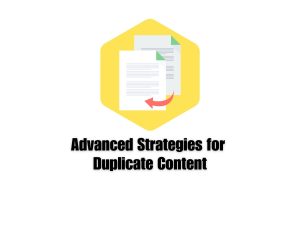
Case Studies: Successful Usage of Video Scripts
In the digital age, video content has become an integral part of online communication strategies for businesses and organizations across various industries. While videos are
In the multifaceted world of search engine optimization (SEO), understanding how search engines operate is vital for improving your website’s visibility. Among many factors that influence search engine rankings, the structure of your website and its internal linking strategy play critical roles in how search engines navigate, crawl, and index your website. This article will explore the impact these elements have on crawling and indexing, ultimately affecting your website’s SEO performance.
Website structure, often referred to as site architecture, involves the manner in which your website’s pages are linked together. Three vital elements define site architecture — hierarchy, navigation, and URL structure. A logically structured website is not only beneficial for the user experience but also significantly influences how search engine bots crawl and index your site.
A website structured Hierarchically guided by themes and sub-themes allows bots to make sense of the content on your website more effectively. For example, a clothing e-commerce website might have separate sections for men, women, and kids, further divided into various categories like tops, bottoms, and accessories. Such clear categorization makes it easier for search engine bots to understand, crawl, and index the nature of your website content.
Navigation, including menus, site bars, and footer links, is an integral aspect of website structure. It dictates how users and bots maneuver through your site. A simple, intuitive navigation system improves the crawlability of your site, making every page accessible for indexing.
The URL structure of your web pages also helps search engines to understand and categorize your website content. URL paths that clearly indicate the page’s content can enhance your site’s crawlability and indexability.
Internal linking refers to the process of linking one page of your website to another page on the same website. They establish a hierarchy on your website, allowing the transfer of value and authority from one page to another, often referred to as “link juice.”
Internal links guide search engine crawlers from one page to another on your website, defining the pathway that these bots will follow. A robust internal linking strategy ensures that crawlers can discover all pages on your site, improving your site’s overall visibility and indexability.
When done correctly, internal linking can help distribute page authority throughout your website, signaling to search engines which web pages carry more importance. This can greatly influence how these pages rank in search engine results pages (SERPs).
Furthermore, internal links enrich the user experience by providing further reading options, reducing bounce rate, and improving engagement levels — all of which indirectly boos your SEO.
In conclusion, the structure of your website and your internal linking strategy significantly affect how search engine bots crawl and index your site. An intuitive, logically organized website enhanced with a smart internal linking strategy can streamline the path for search engine crawlers, leading to improved crawlability, better indexing, and ultimately, higher search engine rankings. As a website owner, it’s crucial to pay attention to your site’s architecture and internal linking to ensure your SEO efforts bear fruit.

In the digital age, video content has become an integral part of online communication strategies for businesses and organizations across various industries. While videos are

Duplicate content refers to identical or similar content that appears on multiple URLs within a website or across different websites. While duplicate content is common





“LeadsView did an excellent job with my project and will definitely recommend. Easy to work with, flexible and good quality of work. I am more than happy to recommend them."




















Copyright 2023 © LeadsView. All Rights Reserved
